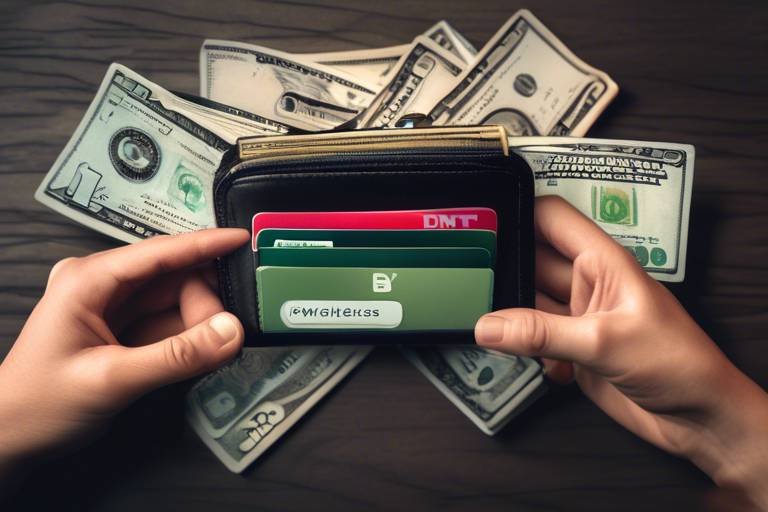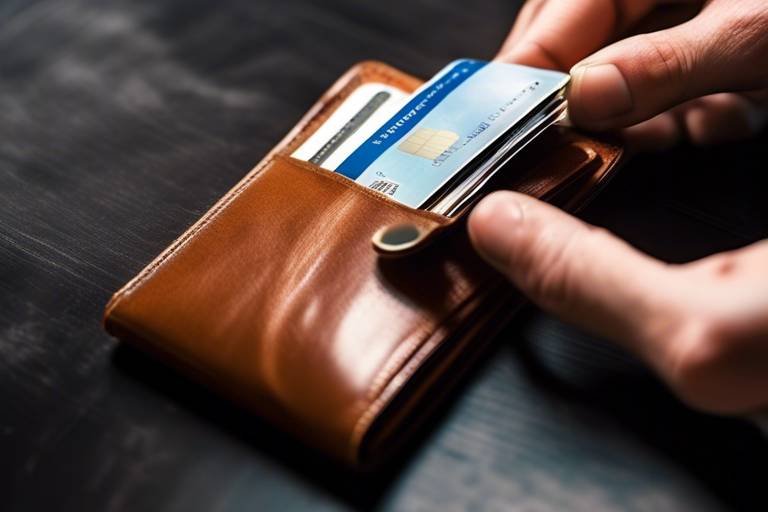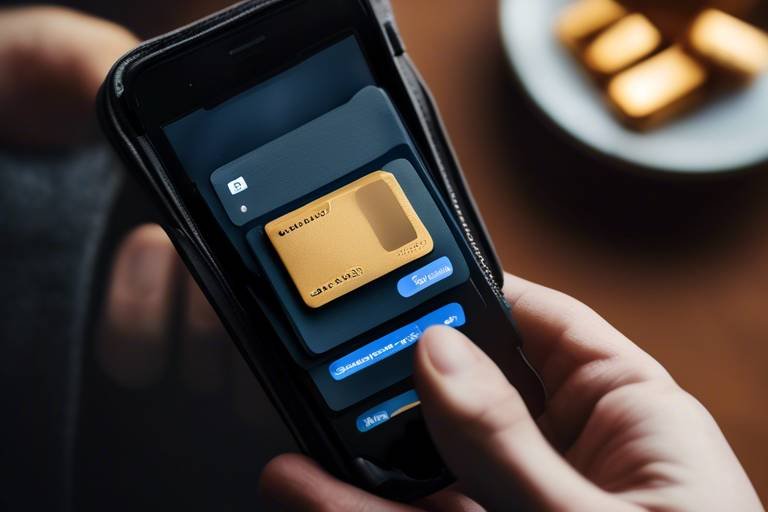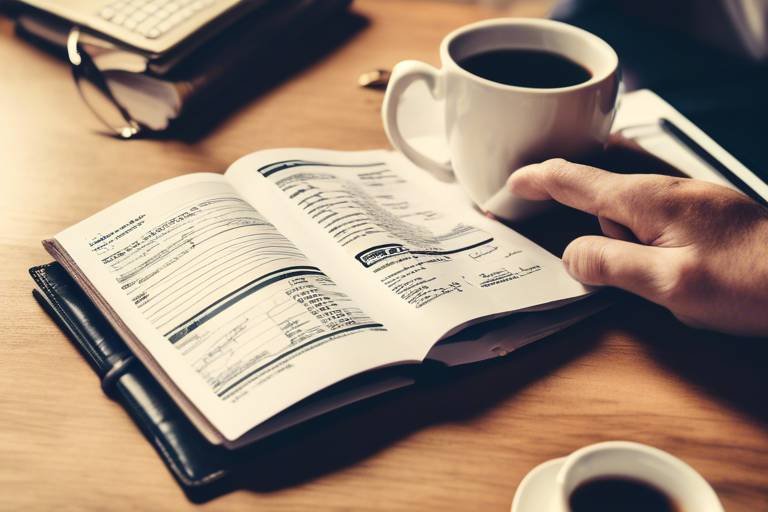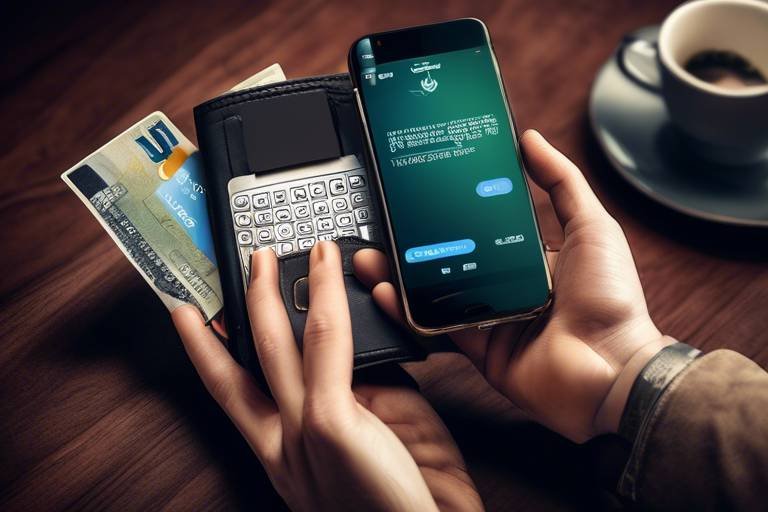The Role of Wallet Recovery Phrases - What You Should Know
In the ever-evolving world of cryptocurrency, where fortunes can be made or lost in the blink of an eye, understanding the role of wallet recovery phrases is crucial. These phrases are not just a string of random words; they are the keys to your digital assets. Imagine being locked out of your bank account with no way to access your funds—this is the reality for many who neglect the significance of their recovery phrases. In this article, we'll dive deep into what these phrases are, why they matter, and how to keep them safe.
Wallet recovery phrases, often referred to as seed phrases, are a series of words generated by your cryptocurrency wallet that allow you to access your funds. Think of them as a master password, but instead of a single word or phrase, you get a collection of typically 12 to 24 words. These phrases work through a cryptographic algorithm that generates your wallet's private keys. If you lose access to your wallet—whether through a forgotten password, a lost device, or a corrupted application—this recovery phrase is your lifeline. It’s the ultimate backup plan, ensuring that you can recover your assets no matter what happens.
The security of your wallet recovery phrases is paramount. If someone gains access to your recovery phrase, they can control your wallet and, consequently, your assets. Imagine handing over the keys to your house to a stranger; that's what it's like if your recovery phrase falls into the wrong hands. The risks associated with compromised phrases are severe, leading to potential loss of funds that can be devastating. Therefore, it is essential to understand the implications of losing access to your wallet and the importance of keeping your recovery phrases secure.
In the digital age, various threats can endanger your wallet recovery phrases. Notable among these are phishing attacks and malware. Both methods are designed to trick you into revealing sensitive information or to infiltrate your device. Phishing attacks often come in the form of deceptive emails or websites that mimic legitimate services, while malware can silently compromise your device, waiting for the right moment to strike. Understanding these threats is the first step in protecting your valuable cryptocurrency assets.
Phishing is a prevalent method used by attackers to obtain sensitive information. These attackers are crafty, often creating emails or messages that look legitimate, making it easy for unsuspecting users to fall victim. Here are some common phishing techniques:
- Email Phishing: Fake emails that appear to be from your wallet provider, urging you to click on a link.
- SMS Phishing: Text messages that prompt you to enter your recovery phrase on a fake website.
- Social Media Scams: Fraudulent accounts that impersonate legitimate companies to extract personal information.
Recognizing these techniques can save you from significant losses.
Malware can infiltrate devices and compromise wallet security. Various types of malware target cryptocurrency users, including keyloggers, which record your keystrokes, and trojans, which can create backdoors for attackers. To protect yourself, consider these preventive measures:
- Keep your software updated to patch vulnerabilities.
- Use reputable antivirus software to detect and eliminate threats.
- Avoid downloading apps or files from untrusted sources.
Implementing best practices for storing wallet recovery phrases is vital. Here are some actionable tips on how to securely manage and protect your recovery phrases:
- Write it Down: Always keep a physical copy of your recovery phrase in a secure location, like a safe.
- Use a Password Manager: If you prefer digital storage, use a reputable password manager that encrypts your data.
- Never Share: Never disclose your recovery phrase to anyone, regardless of the situation.
If you lose access to your wallet, recovery phrases are crucial for restoration. The process of using recovery phrases to regain access to your cryptocurrency assets is straightforward but must be done correctly to avoid mistakes.
Restoring a wallet using a recovery phrase involves specific steps:
- Open your cryptocurrency wallet application.
- Select the option to restore or recover a wallet.
- Enter your recovery phrase exactly as it was provided.
- Follow any additional prompts to complete the restoration.
Users often make mistakes during the recovery process. Common pitfalls include:
- Inputting the recovery phrase incorrectly.
- Using a recovery phrase from a different wallet.
- Failing to back up the recovery phrase in a secure location.
Avoiding these mistakes can ensure a successful wallet recovery.
As technology evolves, so do wallet recovery methods. Speculations about advancements in wallet recovery phrases suggest that future developments may include biometric security measures or enhanced encryption techniques. These innovations could significantly improve cryptocurrency security, making it even more challenging for unauthorized users to gain access to your assets.
- What is a wallet recovery phrase? A wallet recovery phrase is a series of words that allows you to access and recover your cryptocurrency wallet.
- How many words are typically in a recovery phrase? Recovery phrases usually consist of 12 to 24 words.
- What happens if I lose my recovery phrase? If you lose your recovery phrase, you may permanently lose access to your wallet and funds.
- Can I change my recovery phrase? No, recovery phrases are generated when you create your wallet and cannot be changed.
- How can I keep my recovery phrase safe? Store it in a secure physical location or use an encrypted password manager.
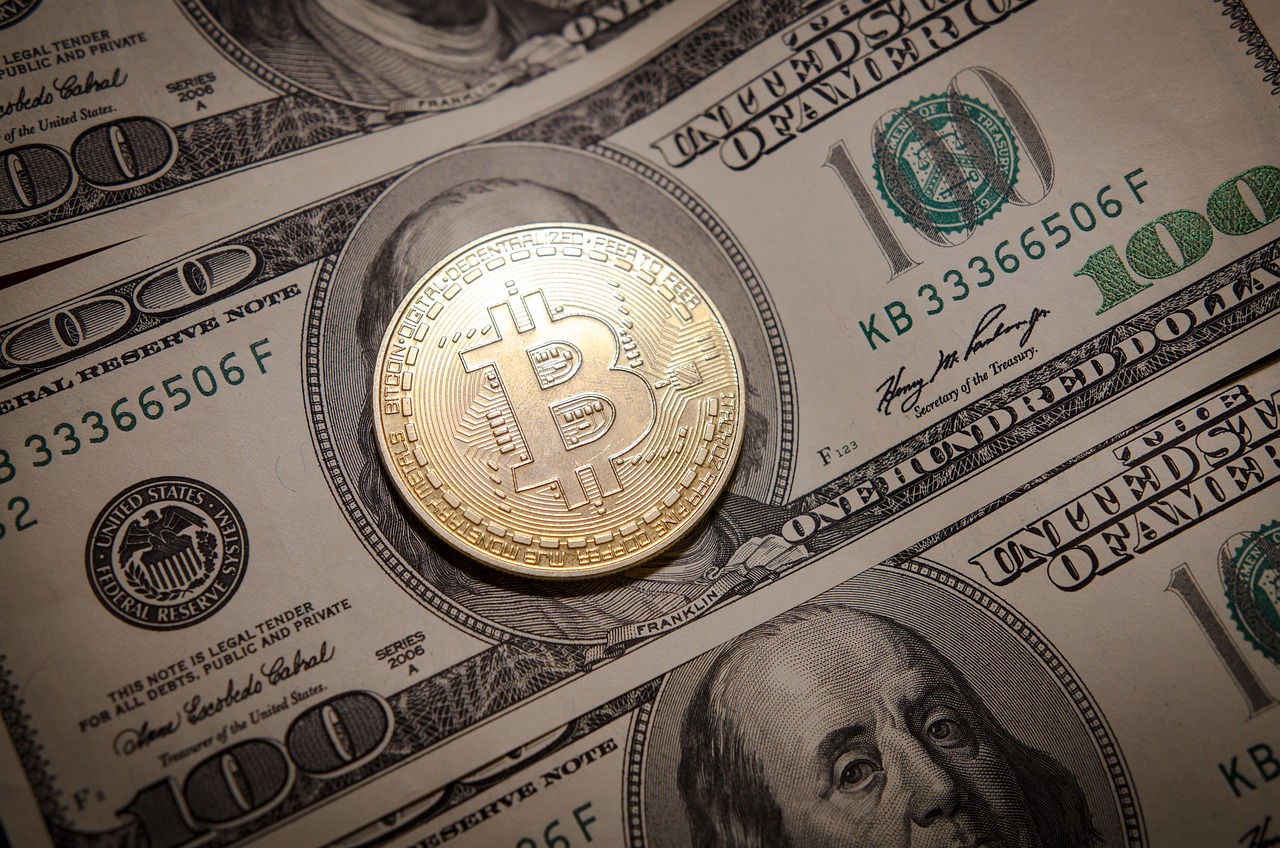
Understanding Wallet Recovery Phrases
Wallet recovery phrases, often referred to as seed phrases, serve as the backbone of your cryptocurrency wallet's security. Imagine these phrases as the master key to your digital treasure chest. Without them, accessing your assets can be nearly impossible. Typically consisting of 12 to 24 randomly generated words, these phrases effectively encode your wallet's private keys, which are essential for managing your cryptocurrency holdings.
When you create a new wallet, the software generates a recovery phrase that you must write down and keep safe. This phrase is crucial because it allows you to recover your wallet in case of device loss, theft, or damage. Just like you wouldn't leave your house keys lying around, you should never store your recovery phrase in an insecure location, such as a note on your phone or a cloud storage service. Instead, consider writing it on paper and keeping it in a secure place, like a safe or safety deposit box.
The functionality of wallet recovery phrases is straightforward yet powerful. When you enter your recovery phrase into a compatible wallet application, the software regenerates your private keys, giving you access to your cryptocurrency funds. This means that anyone with access to your recovery phrase can also access your wallet, which is why keeping it private is paramount.
It's also important to note that wallet recovery phrases are not just a one-time backup solution. They can also be used across different wallets that support the same standard, allowing for flexibility in managing your assets. However, this also means that if your recovery phrase falls into the wrong hands, your entire cryptocurrency portfolio is at risk. Thus, understanding the significance of these phrases is the first step in maintaining your digital security.
To summarize, here are the key points about wallet recovery phrases:
- Essential for Access: They are necessary for accessing and recovering your wallet.
- Randomly Generated: Typically consist of 12 to 24 words.
- Keep Them Safe: Store them securely and never share them.
- Regenerate Private Keys: They allow you to regenerate your wallet's private keys.
In conclusion, understanding wallet recovery phrases is vital for anyone involved in cryptocurrency. They are not just a backup; they are your lifeline to your digital assets. Treat them with the utmost care, and you’ll ensure that your cryptocurrency investments remain safe and secure.

Importance of Security
When it comes to cryptocurrency, the phrase "not your keys, not your coins" rings true. This adage highlights the critical nature of wallet recovery phrases in ensuring the security of your digital assets. Without these phrases, accessing your wallet could be nearly impossible, making them a vital component of your cryptocurrency security strategy. Imagine your wallet as a treasure chest; the recovery phrase is the key that unlocks it. If that key is lost or compromised, your treasure could be out of reach forever.
Securing your wallet recovery phrases is not just a good idea—it's essential. The risks associated with compromised phrases can lead to devastating consequences. For instance, if someone gains access to your recovery phrase, they can effectively control your wallet, transferring your assets without your consent. This scenario is not just a theoretical concern; it has happened to many unsuspecting users who failed to safeguard their phrases. The importance of security cannot be overstated, as protecting your recovery phrase is akin to safeguarding your financial future.
Let's delve into some of the potential risks you face when your recovery phrases are not secure:
- Loss of Access: If you lose your recovery phrase and cannot access your wallet, your funds may be permanently lost.
- Theft: Compromised recovery phrases can lead to unauthorized access, resulting in stolen assets.
- Identity Theft: Attackers can use your recovery phrase to impersonate you and gain further access to your accounts.
To illustrate the potential fallout from compromised recovery phrases, consider the following table which outlines the consequences of security breaches:
| Type of Breach | Potential Consequences |
|---|---|
| Phishing Attack | Loss of funds, unauthorized transactions |
| Malware Infection | Access to sensitive information, loss of wallet control |
| Physical Theft | Complete loss of assets if recovery phrase is stored insecurely |
In summary, the importance of securing your wallet recovery phrases cannot be stressed enough. They serve as the gateway to your cryptocurrency assets, and any compromise can lead to dire consequences. By understanding the risks and taking proactive measures, you can significantly enhance the security of your digital wealth. Always remember: a little caution can go a long way in the world of cryptocurrency.

Common Threats
When it comes to securing your cryptocurrency, understanding the to wallet recovery phrases is crucial. In a world where digital assets are increasingly valuable, attackers are constantly devising new methods to exploit vulnerabilities. Two of the most prevalent threats include phishing attacks and malware, both of which can lead to unauthorized access to your precious assets.
Phishing attacks are often disguised as legitimate communications, tricking users into revealing sensitive information. These attacks can come in various forms, such as emails that mimic trusted sources or fake websites that look authentic. For instance, you might receive an email that appears to be from your wallet provider, prompting you to enter your recovery phrase. If you fall for this trap, you could unknowingly hand over your recovery phrase to a malicious actor.
On the other hand, malware poses a significant risk as it can infiltrate your device without your knowledge. Once installed, malware can monitor your activities, capture keystrokes, and even access your wallet directly. Types of malware that specifically target cryptocurrency users include:
- Keyloggers: These record your keystrokes, allowing attackers to capture your recovery phrases as you type them.
- Trojans: These disguise themselves as legitimate software but contain harmful code that can compromise your device.
- Ransomware: This locks you out of your device until you pay a ransom, often leading to the loss of access to your wallet.
It's essential to remain vigilant against these threats, as the consequences of compromised recovery phrases can be devastating. Losing access to your wallet means losing your cryptocurrency, and in many cases, there is no way to recover it. The digital nature of these assets means that once they're gone, they're gone for good. Therefore, understanding these common threats is the first step in safeguarding your wallet recovery phrases and, by extension, your digital wealth.

Phishing Techniques
Phishing techniques are among the most common and dangerous methods that attackers use to steal sensitive information, including wallet recovery phrases. These techniques often manipulate users into providing their private data by masquerading as trustworthy entities. Imagine receiving an email that looks like it's from your bank or a popular cryptocurrency exchange, urging you to verify your account. At first glance, it seems legitimate, but lurking behind that façade is a potential thief ready to pounce on your hard-earned assets.
There are several phishing techniques that you should be aware of:
- Email Phishing: This is the classic method where attackers send out mass emails that appear to come from legitimate sources. These emails usually contain links to fake websites designed to capture your login credentials or recovery phrases.
- SMS Phishing (Smishing): Similar to email phishing, this technique involves sending fraudulent text messages that prompt you to click on malicious links or provide personal information.
- Voice Phishing (Vishing): This technique uses phone calls to impersonate legitimate organizations. Attackers may create a sense of urgency, convincing you to divulge your recovery phrase over the phone.
- Clone Phishing: Here, attackers create a nearly identical replica of a legitimate email you’ve received in the past, but with malicious links or attachments. This can trick even the most cautious users.
To defend yourself against these phishing techniques, it's crucial to stay vigilant. Always double-check email addresses, look for typos in URLs, and never click on links from unknown sources. If something feels off, trust your instincts and avoid engaging with the message. Additionally, consider using two-factor authentication (2FA) whenever possible, as it adds an extra layer of security to your accounts.
In a world where digital assets are becoming increasingly valuable, understanding phishing techniques is essential for safeguarding your wallet recovery phrases. By being aware of these tactics, you can better protect yourself from falling victim to these malicious schemes.

Malware Risks
In the digital landscape, where convenience meets vulnerability, malware poses a significant threat to cryptocurrency users. Malware is a term that encompasses various malicious software designed to infiltrate devices and compromise security. Imagine your wallet as a treasure chest filled with valuable assets; malware acts like a thief trying to pick the lock. The types of malware that specifically target cryptocurrency users can vary widely, but they all share a common goal: to gain unauthorized access to your sensitive information, including your wallet recovery phrases.
One of the most notorious types of malware is keyloggers. These sneaky programs record every keystroke you make, allowing attackers to capture your recovery phrase as you type it in. Another prevalent form of malware is ransomware, which can lock you out of your device and demand payment in cryptocurrency to regain access. Additionally, there are trojans, which disguise themselves as legitimate software but secretly perform harmful actions in the background.
The implications of falling victim to malware are dire. If your recovery phrase is compromised, you could lose access to your wallet and all its contents in the blink of an eye. Therefore, it is crucial to adopt a proactive approach to safeguard your digital assets. Here are some effective strategies to mitigate the risk of malware:
- Keep Software Updated: Always ensure that your operating system and applications are up to date. Software updates often include patches for security vulnerabilities that malware can exploit.
- Use Reliable Security Software: Invest in reputable antivirus and anti-malware programs that can detect and neutralize threats before they cause harm.
- Avoid Suspicious Links: Be wary of clicking on links in emails or messages from unknown sources, as these can lead to phishing sites or download harmful software.
- Enable Two-Factor Authentication: Adding an extra layer of security to your accounts can help protect your assets even if your recovery phrase is compromised.
By understanding the risks associated with malware and implementing these protective measures, you can significantly enhance the security of your cryptocurrency wallet. Remember, in the world of digital assets, vigilance is your best defense against the ever-evolving threats lurking in cyberspace.
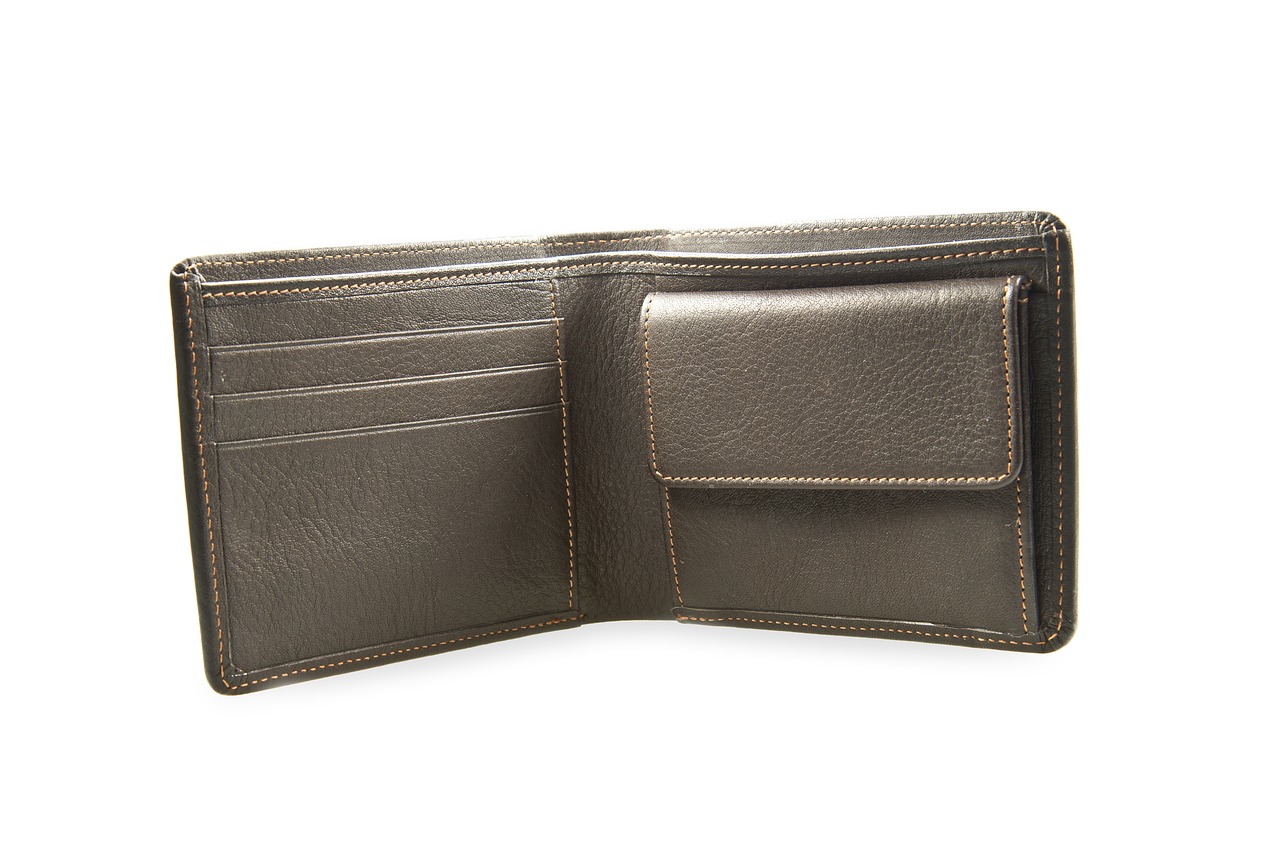
Best Practices for Safeguarding Phrases
When it comes to safeguarding your wallet recovery phrases, a proactive approach is key. Think of your recovery phrase as the golden key to your treasure chest filled with digital assets. Losing it or letting it fall into the wrong hands can be catastrophic. So, how can you ensure that your precious key remains secure? Here are some vital practices to keep in mind:
First and foremost, never store your recovery phrase digitally. While it might be tempting to save it in a note-taking app or a cloud service, doing so exposes you to the risk of hacking or data breaches. Instead, consider writing it down on a piece of paper and storing it in a safe place, such as a locked drawer or a safe. If you want to go the extra mile, you might even want to create multiple copies and store them in different secure locations. This way, if one gets lost or damaged, you still have backups.
Another essential practice is to use a hardware wallet. Hardware wallets are physical devices designed to store your cryptocurrencies offline. By keeping your wallet recovery phrases and private keys on a hardware wallet, you significantly reduce the risk of online attacks. These wallets are often equipped with additional security measures, such as PIN codes and biometric authentication, making them a robust choice for serious cryptocurrency enthusiasts.
It's also crucial to stay informed about the latest security threats. Cybercriminals are constantly evolving their tactics, and being aware of new phishing scams or malware can help you stay one step ahead. Regularly check reliable cryptocurrency news sources or forums to keep your knowledge up to date. For instance, if you hear about a new phishing technique that targets wallet users, you can adjust your security practices accordingly.
Consider utilizing two-factor authentication (2FA) wherever possible. Although 2FA is typically associated with online accounts, it can also be applied to your cryptocurrency wallet. By requiring an additional verification step, such as a code sent to your phone, you add an extra layer of security that can deter unauthorized access. Remember, every little bit of security helps!
Finally, be cautious about sharing your recovery phrase. Even among friends or family, it’s best to keep this information private. Think of it as your bank account number; would you share that with just anyone? By keeping your recovery phrase confidential, you minimize the chances of it falling into the wrong hands.
In summary, safeguarding your wallet recovery phrases is not just about being careful; it's about being strategic. By implementing these best practices, you can help ensure that your digital assets remain protected and accessible only to you.
- What is a wallet recovery phrase?
A wallet recovery phrase, often referred to as a seed phrase, is a series of words that allows you to access your cryptocurrency wallet and recover your assets. - How should I store my recovery phrase?
It's best to write your recovery phrase on paper and store it in a secure location, such as a safe. Avoid digital storage options. - Can I use a password manager to store my recovery phrase?
While password managers are generally secure, it's still safer to keep your recovery phrase offline to avoid potential hacking risks. - What should I do if I lose my recovery phrase?
If you lose your recovery phrase, you may lose access to your wallet and funds permanently. Always have a backup in place. - Is two-factor authentication necessary for cryptocurrency wallets?
While not mandatory, using two-factor authentication significantly enhances your wallet's security and is highly recommended.

Restoring Access to Your Wallet
Have you ever found yourself locked out of your cryptocurrency wallet? It can feel like being locked out of your own bank vault, right? But fear not! Your wallet recovery phrase is your golden key to regaining access. Understanding how to properly use this phrase is crucial for anyone dealing with digital assets. In this section, we’ll break down the steps you need to follow to restore your wallet and get back to managing your cryptocurrencies with ease.
The first step in the recovery process is to locate your wallet recovery phrase. This phrase, often a series of 12 to 24 words, was generated when you first created your wallet. If you’ve stored it securely—perhaps in a safe or a password manager—now is the time to retrieve it. If you’ve been diligent about safeguarding your recovery phrase, you’re already ahead of the game! But if you can’t find it, unfortunately, you may not be able to restore access to your wallet. This is why keeping your recovery phrase safe is so important.
Once you have your recovery phrase in hand, the next step is to open the wallet application or platform you used to create your wallet. Most wallets have a straightforward recovery option. Look for a button or link that says something like “Restore Wallet” or “Recover Wallet.” When you click on this option, you’ll be prompted to enter your recovery phrase. Make sure you enter the words in the exact order they were given to you, as even a small mistake can lead to failure in restoring your wallet.
After entering your recovery phrase, the wallet application will verify it. If everything checks out, you’ll be granted access to your wallet once again! It’s like finding a long-lost treasure chest filled with your digital assets. However, if the recovery phrase is incorrect, don’t panic. Double-check the words and their order. Remember, it’s easy to make a mistake when typing out a list of words, especially under pressure.
Now, let’s talk about some common mistakes to avoid during this process. One major pitfall is entering the recovery phrase incorrectly. It’s crucial to pay attention to detail. Another mistake is not having a backup of your recovery phrase. If you lose it, you may lose access to your funds permanently. Always create multiple copies and store them in different secure locations. Lastly, be cautious of phishing scams that might trick you into entering your recovery phrase on a fake website. Always ensure you’re using the official wallet application.
In summary, restoring access to your wallet using your recovery phrase is a straightforward process if you follow the correct steps. Always keep your recovery phrase safe, enter it accurately, and be vigilant against scams. With these tips in mind, you can navigate the recovery process smoothly and confidently.
- What should I do if I lose my recovery phrase? Losing your recovery phrase can mean losing access to your wallet permanently. Always store it securely and consider using a backup method.
- Can I change my recovery phrase? No, your recovery phrase is generated at the time of wallet creation and cannot be changed. If you want a new phrase, you’ll need to create a new wallet.
- Is it safe to share my recovery phrase? Absolutely not! Your recovery phrase is the key to your wallet, and sharing it could result in someone else gaining access to your funds.
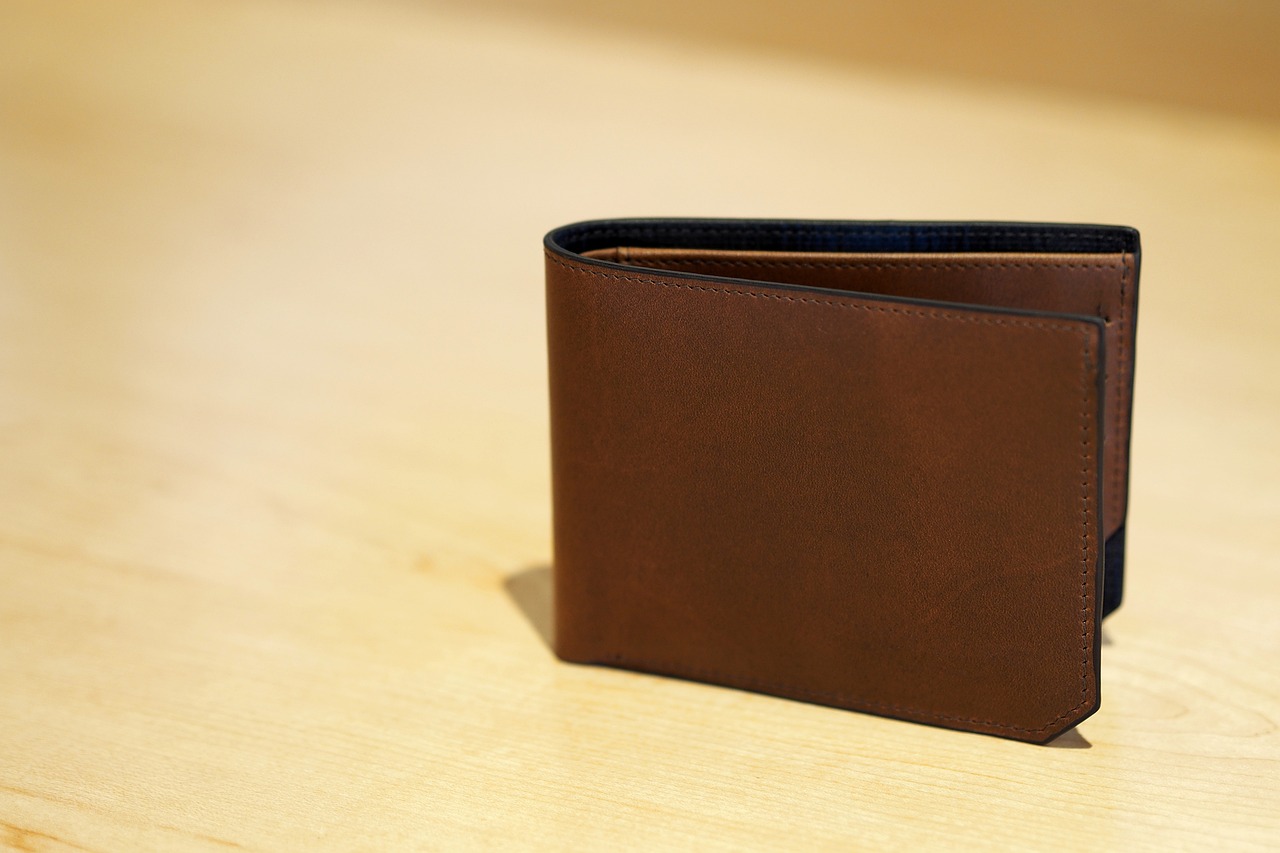
Step-by-Step Recovery Process
Recovering your cryptocurrency wallet using your recovery phrase can be a straightforward process if you follow the right steps. Imagine your wallet as a treasure chest; the recovery phrase is the key that unlocks it. If you ever find yourself locked out, here’s how to regain access effectively.
First and foremost, ensure that you have your recovery phrase handy. This phrase typically consists of 12 to 24 words, and it’s crucial to write it down correctly. One little typo can lead to a wild goose chase, leaving you without access to your precious assets. Once you have your recovery phrase ready, follow these steps:
- Choose the Right Wallet Interface: Depending on the type of wallet you were using, you need to download the corresponding wallet application. Whether it’s a hardware wallet or a software wallet, make sure you’re using the legitimate version from the official website to avoid phishing scams.
- Open the Wallet Application: Launch the wallet application and look for the option that says “Restore Wallet” or “Recover Wallet.” This option is usually available on the main screen or in the settings menu.
- Enter Your Recovery Phrase: When prompted, carefully input your recovery phrase. It’s best to do this in a quiet environment where you can concentrate. Double-check each word as you enter it, ensuring there are no mistakes. Some wallets might require you to enter the words in the exact order they were provided, so pay close attention!
- Set Up Your Wallet: Once your recovery phrase is accepted, the wallet will begin to restore your assets. After the restoration process, you may need to set up a new password or PIN for added security. Make sure it’s something memorable yet secure.
- Verify Your Balance: After successfully restoring your wallet, take a moment to verify that all your assets are intact. This is your treasure chest, after all! If everything looks good, you’re back in business.
Remember, the recovery process can vary slightly depending on the wallet provider, but these general steps will guide you through most scenarios. If you run into any issues, don’t hesitate to consult the support section of the wallet’s official website. They often have troubleshooting guides that can help you navigate through any hiccups.
In addition to following these steps, it’s important to keep your recovery phrase secure and private. Treat it like a password to your bank account—never share it with anyone. If you lose your recovery phrase, unfortunately, you may lose access to your wallet permanently. So, once you recover your wallet, consider storing your recovery phrase in a safe place, perhaps even a fireproof safe or a secure digital vault.
In summary, recovering your wallet requires a careful approach, but by following these steps, you can ensure a smooth restoration process. Always stay vigilant and prioritize the security of your recovery phrase to protect your digital assets.
- What should I do if I forget my recovery phrase? Unfortunately, if you lose your recovery phrase, there is no way to recover your wallet or assets. It’s crucial to keep it safe and secure.
- Can I change my recovery phrase? No, your recovery phrase is generated when you create your wallet and cannot be changed. If you want a new phrase, you would need to create a new wallet.
- What if someone else has my recovery phrase? If someone else has access to your recovery phrase, they can access your wallet and potentially steal your funds. It’s essential to keep your phrase confidential.

Common Mistakes to Avoid
When it comes to recovering your cryptocurrency wallet, many users unknowingly make mistakes that can lead to permanent loss of access to their assets. One of the most common blunders is failing to back up the recovery phrase securely. Imagine having a treasure map but leaving it in a place where anyone can find it—this is akin to writing down your recovery phrase on a piece of paper and sticking it on your fridge. Instead, you should store it in a safe, secure location, like a safe deposit box or a fireproof safe, to ensure that it remains confidential and protected from prying eyes.
Another frequent mistake is neglecting to verify the recovery phrase after it’s created. Just like double-checking your flight details before heading to the airport, it's crucial to confirm that you've recorded the phrase correctly. A single typo can mean the difference between accessing your wallet and losing everything. Use a methodical approach: write it down, read it back, and even have someone you trust verify it for you.
Additionally, many users underestimate the importance of using reputable wallet software. There are countless wallet options available, but not all are created equal. Some might seem appealing due to flashy marketing, but they could be riddled with vulnerabilities. Always conduct thorough research and read user reviews before downloading any wallet application. Trusting a shady wallet is like entrusting your life savings to a stranger on the street.
Lastly, don’t forget about the digital aspect of your recovery phrase. Many users store their phrases in plaintext files on their computers or cloud storage, thinking they’re safe. However, this is a significant risk, as malware and hackers can easily access these files. Instead, consider using encrypted storage solutions or even writing it down and keeping it in a physical form. Remember, in the world of cryptocurrency, your security is only as strong as your weakest link.
To summarize, here are some common mistakes to avoid when managing your wallet recovery phrases:
- Failing to back up the recovery phrase securely.
- Not verifying the accuracy of the recorded phrase.
- Using untrustworthy wallet software.
- Storing the phrase in unsecured digital formats.
By steering clear of these pitfalls, you can significantly enhance the security of your cryptocurrency assets and ensure that your recovery process goes smoothly if the need arises.
Q: What is a wallet recovery phrase?
A: A wallet recovery phrase, also known as a seed phrase, is a series of words that allows you to recover your cryptocurrency wallet and access your digital assets.
Q: How should I store my recovery phrase?
A: It’s best to store your recovery phrase in a secure physical location, such as a safe or a safety deposit box, and avoid digital storage unless encrypted.
Q: Can I change my recovery phrase?
A: No, once a wallet is created, the recovery phrase is set. However, you can create a new wallet with a new recovery phrase if needed.
Q: What should I do if I lose my recovery phrase?
A: If you lose your recovery phrase, you may permanently lose access to your wallet and funds, as there is no way to recover it without the phrase.
Q: Are there any tools to help manage recovery phrases?
A: Yes, there are hardware wallets and secure password managers designed to help you manage and store your recovery phrases safely.
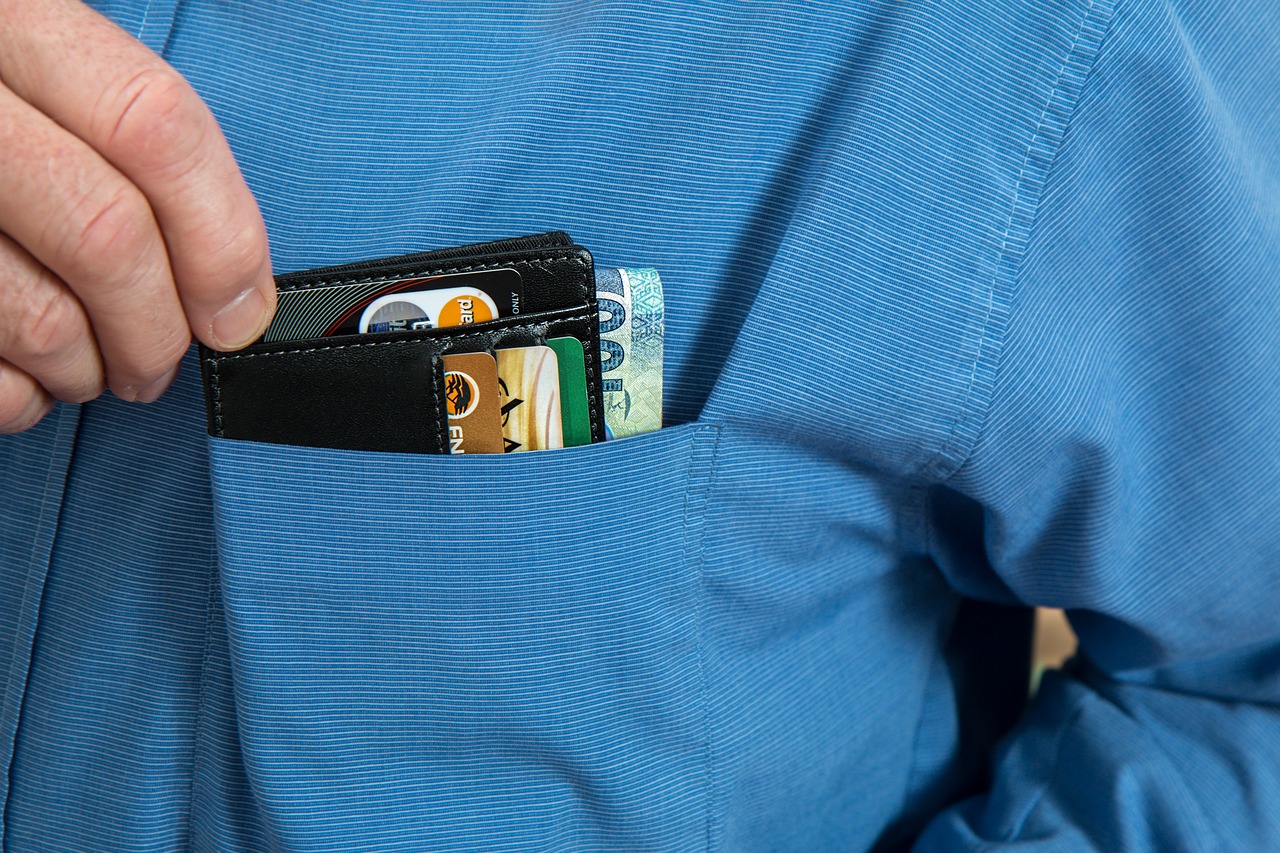
Future of Wallet Recovery Phrases
As the world of cryptocurrency continues to evolve at a breakneck pace, the is shaping up to be both exciting and challenging. With advancements in technology, we can expect significant changes that will enhance the security and usability of these critical components of digital asset management. Imagine a future where recovering your wallet is as effortless as a few taps on your smartphone, yet still fortified against the threats that lurk in the digital shadows.
One of the most promising developments on the horizon is the integration of biometric security measures. Just as we’ve seen with smartphones, the use of fingerprints or facial recognition could pave the way for more secure and user-friendly recovery methods. Instead of relying solely on a phrase that can be forgotten, stolen, or compromised, users might authenticate their identity through unique biological traits. This shift could drastically reduce the risk of unauthorized access, making it a game-changer for wallet security.
Additionally, we may witness the rise of multi-signature wallets becoming the norm. In this setup, multiple parties must approve a transaction before it’s executed, adding an extra layer of security. Imagine needing the consent of your trusted friends or family members to access your funds, thereby ensuring that even if one recovery phrase is compromised, the assets remain secure. This collaborative approach could redefine the way we think about ownership and security in the cryptocurrency space.
Moreover, as artificial intelligence (AI) continues to grow, it could play a pivotal role in enhancing wallet recovery processes. AI-driven systems might analyze user behavior and patterns, making it easier to identify when something seems amiss. For example, if an unusual attempt is made to access a wallet, the system could trigger alerts or additional verification steps, acting as a digital guardian that protects your assets around the clock.
However, with these advancements come new challenges. As security measures become more sophisticated, so do the tactics employed by cybercriminals. It’s crucial for users to stay informed about potential threats and adapt their security practices accordingly. For instance, while biometric authentication may seem foolproof, hackers are always on the lookout for vulnerabilities. Thus, education and awareness will play a vital role in the future of wallet recovery phrases.
In conclusion, the future of wallet recovery phrases is poised for transformation. With innovations in biometric security, multi-signature wallets, and AI, we can anticipate a more secure and user-friendly experience. However, as we embrace these advancements, we must also remain vigilant against emerging threats. The journey towards a safer cryptocurrency landscape is ongoing, and staying informed is the best defense against potential risks.
- What is a wallet recovery phrase?
A wallet recovery phrase, often referred to as a seed phrase, is a series of words that allows users to access their cryptocurrency wallet. It acts as a backup, enabling recovery of funds in case of lost access. - How can I secure my wallet recovery phrase?
To secure your wallet recovery phrase, store it offline in a safe place, avoid sharing it with anyone, and consider using a hardware wallet for added security. - What should I do if I lose my wallet recovery phrase?
If you lose your wallet recovery phrase, unfortunately, you may lose access to your funds permanently. It's crucial to back it up securely. - Will wallet recovery phrases become obsolete?
While advancements in technology may change how we secure wallets, the concept of recovery phrases will likely remain relevant as a fundamental aspect of cryptocurrency security.
Frequently Asked Questions
- What is a wallet recovery phrase?
A wallet recovery phrase, often referred to as a seed phrase, is a series of words generated by your cryptocurrency wallet. This phrase is crucial for accessing your wallet and recovering your funds if you lose access to it. Think of it as the key to your digital vault; without it, you're locked out!
- Why is the security of my recovery phrase important?
The security of your recovery phrase is vital because anyone who has access to it can control your cryptocurrency assets. If someone compromises your recovery phrase, they can easily steal your funds. It's like giving someone the combination to your safe—once they have it, your valuables are at risk!
- What are common threats to wallet recovery phrases?
Common threats include phishing attacks and malware. Phishing attacks trick you into providing sensitive information, while malware can infiltrate your device to steal your recovery phrase. Always be cautious and double-check the sources you interact with online to avoid falling victim to these schemes!
- How can I protect my recovery phrase from phishing?
To protect your recovery phrase from phishing, always verify the authenticity of websites and emails before entering any information. Look for signs of phishing, such as poor grammar or suspicious links. Additionally, consider using two-factor authentication whenever possible to add an extra layer of security.
- What types of malware should I be aware of?
Be on the lookout for keyloggers, which record your keystrokes, and spyware, which can monitor your activities. These types of malware can capture your recovery phrase if they infect your device. Keeping your software updated and using reputable antivirus programs can help you stay protected!
- What are the best practices for storing my recovery phrase?
Best practices include writing your recovery phrase down on paper and storing it in a secure location, such as a safe or a safety deposit box. Avoid storing it digitally, as this increases the risk of hacking. Think of it like a treasure map; you want to keep it safe from prying eyes!
- How do I restore access to my wallet using a recovery phrase?
To restore access, open your wallet application and look for the option to recover your wallet. Enter your recovery phrase when prompted, and follow the on-screen instructions. It's a straightforward process, but make sure you input the words in the correct order!
- What common mistakes should I avoid during the recovery process?
Common mistakes include entering the recovery phrase incorrectly, using the wrong wallet software, or failing to follow the recovery instructions carefully. Take your time and double-check everything to ensure a successful recovery!
- What does the future hold for wallet recovery methods?
The future may see advancements such as biometric recovery options or enhanced security features. As technology evolves, we can expect more secure and user-friendly methods for recovering wallets, making it easier to keep our assets safe.



